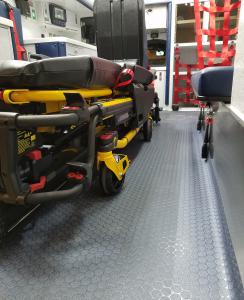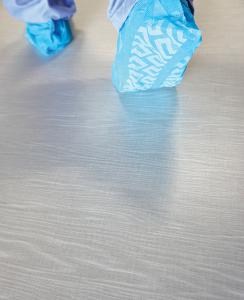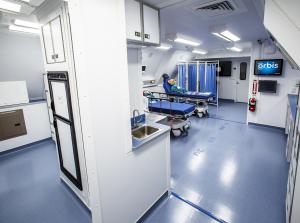Lonseal Flooring Explains What Antimicrobial Flooring Defend Against
What exactly does antimicrobial flooring defend against?
Antimicrobial flooring is not just for healthcare. Every type of commercial flooring from carpet to vinyl will have a myriad of microbial bacteria. It’s expected for hospitals and other healthcare facilities to choose a flooring material that is germ resistant to be at the top of the list of necessary qualities. When you consider that customers of restaurants or food providers are consuming the product offered, it’s pretty clear why other types of facility owners need to be concerned about germ tolerance, too. Specialty vehicles such as ambulances and mobile medical clinics, in addition to alternative sources of transportations such as marine vessels and airplanes all have employees and passengers that also need to be protected from pathogens that spread diseases. We have all heard about the cases where cruise lines passengers were quarantined for weeks before being allowed to disembark. Since microorganisms are everywhere (especially on our shoes, the products that we interact with, and in the air we breathe) a flooring product that contributes to combatting illness should be a must-have specification.
What exactly does antimicrobial flooring defend against? The floor has one of the highest exposures to microbes of any part of any facility. Floors with antimicrobial added agents in their formulation are much better protected than those that are just top-layer with an antibacterial agent, which simply wash away after a few cleanings and leave you unprotected. Having the antimicrobial components within the structure of the flooring also defends against a much broader range of damaging organisms. Lonseal’s GreenMedic® is an exclusive high-grade antimicrobial component already in the construction of most of Lonseal’s sheet-vinyl floor offerings. It impedes the growth of microorganisms, which then provides long-term protection from unwanted bacteria and other like unwelcomed guests. There are products out there that use the word antimicrobial incorrectly in their product line, giving the consumer a false sense of security. While there is no amount of cleaning than can ensure that a facility (aside from cleanrooms) will be microbe-free, maintenance and disinfection is the only weapon to kill microbes.
What are the benefits of antimicrobial sheet vinyl flooring? A seamless surface is the first line of defense to bacteria, mold, mildew, and other invaders because it does not give them a good place to hide and breed. Adding an antimicrobial formulation doubles your protection, and makes it nearly impossible for most microbial life to exist on or in the floor for an extended period of time. The following are benefits to having Lonseal’s GreenMedic® sheet vinyl flooring:
• Durable
• Easy to clean
• Easy to install
• Long-lasting
• Have low to no VOC emissions
• Non-allergenic
• No transfer of odors
• Slip-resistant
• Water-resistant
• Able to withstand heavy equipment
• Aesthetically pleasing
• Impedes growth of bacteria
Be careful when specifying antimicrobial flooring. Some sheet-vinyl flooring manufacturers often claim their product to be “naturally antimicrobial”. Some compounds are genetically antimicrobial, such as latex and silver, but epoxies, urethanes, and rubbers are not. A resinous floor is not antimicrobial unless an antimicrobial dispersion is incorporated into the resin. By taking the time to research the most suitable hygienic flooring solution to suit the purpose of the space, a specifier will be able to take steps to improve the hygienic qualities of the project area.
If every floor surface in a facility is already treated to resist microbial life, then that gives it more options in how it can make more uses of the floor plan. For example, break rooms could be moved around. There will be less concern about workers prepping their lunch in a non-sanitary environment. This also makes it easier to convert existing rooms into clean rooms, should the need arise.
When walking into an establishment, cruise ship, or airplane, you shouldn’t have to stop and wonder if you are within a clean environment. It is up to the business to make sure that everything is as clean as possible, and by having an antimicrobial flooring system in place, a facility will be that much closer to that goal. Antimicrobial protection is an investment that gives the facility owners the peace of mind to continue operations, safe in the knowledge that people in their building have an added security in the environment.
Lace Greene-Cordts
Lonseal, Inc.
+1 310-830-7111
email us here
Visit us on social media:
Facebook
Twitter
LinkedIn
Legal Disclaimer:
EIN Presswire provides this news content "as is" without warranty of any kind. We do not accept any responsibility or liability for the accuracy, content, images, videos, licenses, completeness, legality, or reliability of the information contained in this article. If you have any complaints or copyright issues related to this article, kindly contact the author above.



